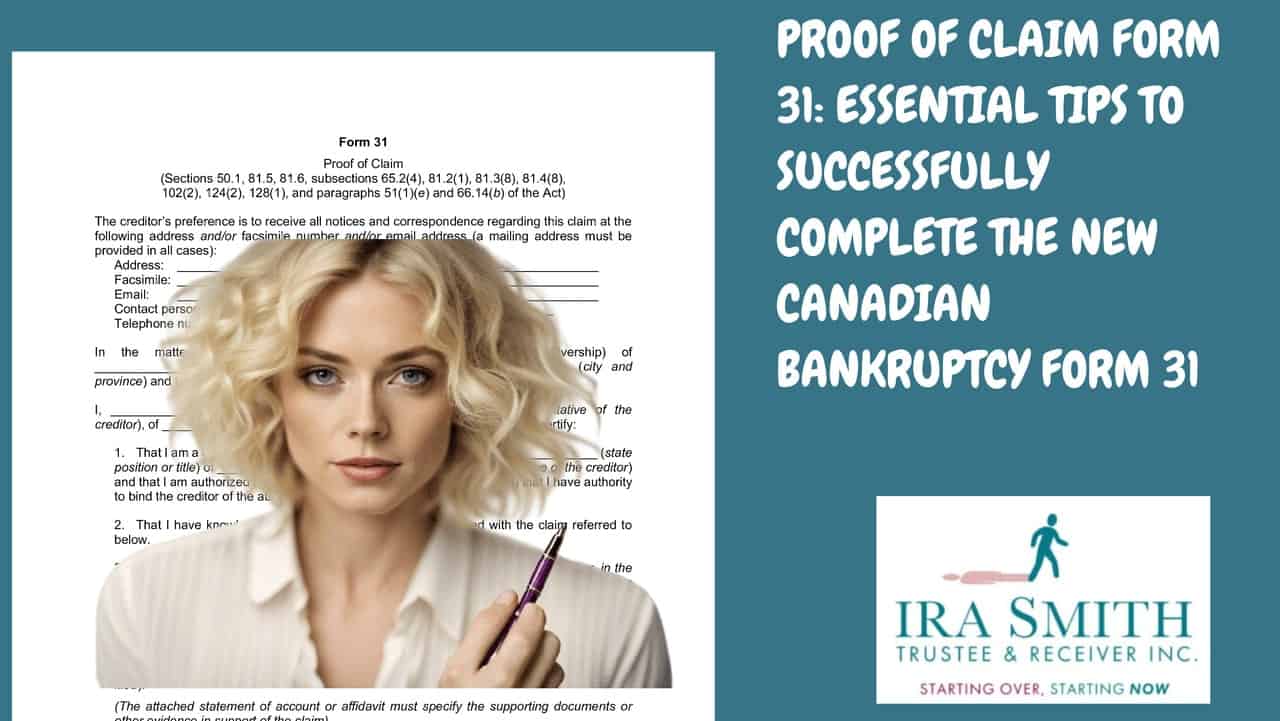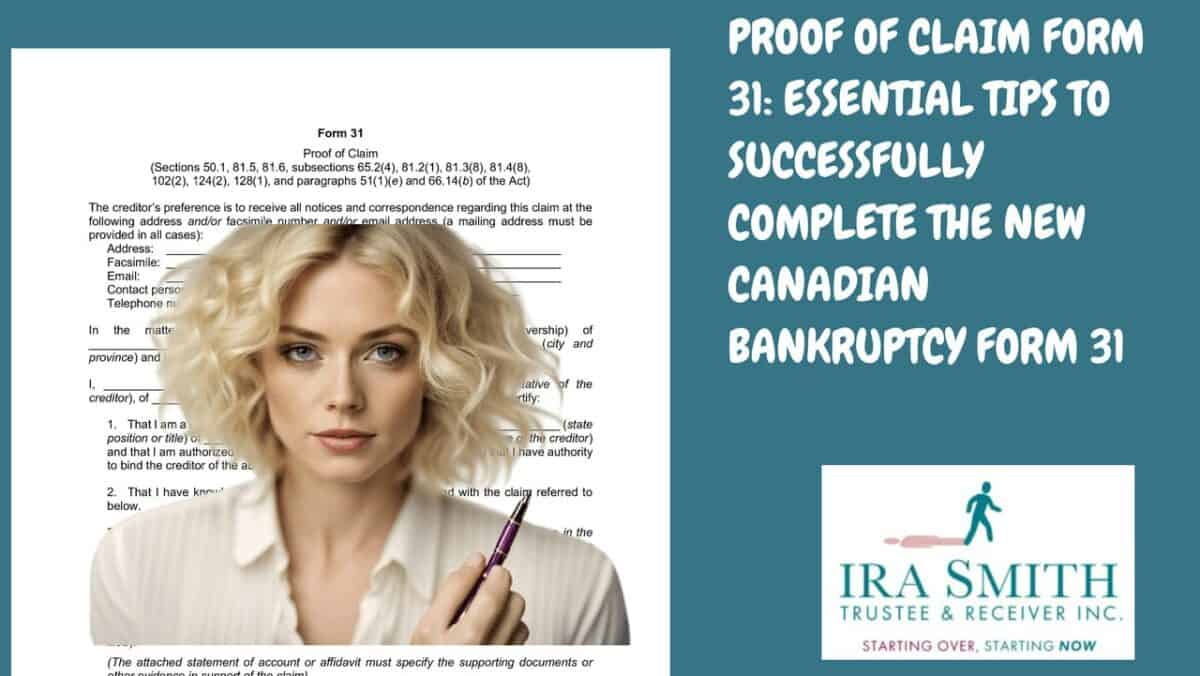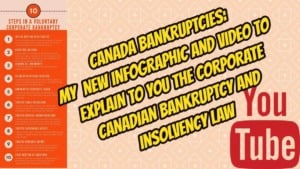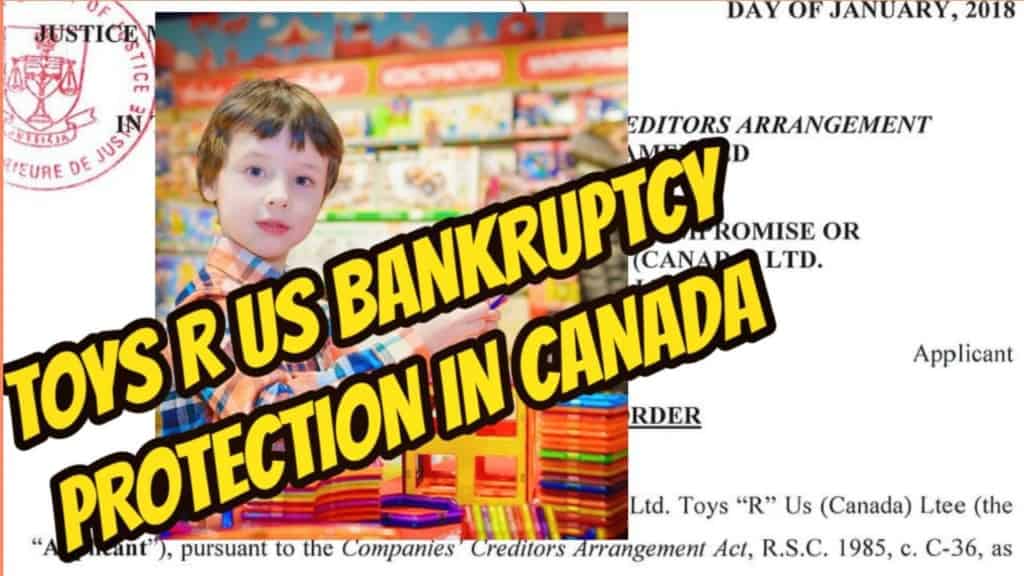Form 31 Proof of Claim Introduction
The Office of the Superintendent of Bankruptcy (OSB) published several amended Forms under the Bankruptcy and Insolvency Act (Canada) (BIA) to promote a more efficient and effective insolvency system, removing some outdated elements and ensuring better data integrity for all stakeholders. These amended Forms were originally set to come into force on July 15, 2024. One of those new forms is the Form 31 proof of claim. This morning, the OSB announced that the effective date has now been pushed back to September 16, 2024.
In this Brandon’s Blog, given the new proof of claim form coming into use effective July 15, I feel I need to update my October 2018 blog titled: FORM 31 PROOF OF CLAIM: HOW TO PROPERLY COMPLETE THE PROOF OF CLAIM. I will compare the new form to the old one as there are substantial changes and advise on how it should be properly completed as we walk through the new form.
Background Information on Form 31 Proof of Claim
Purpose of Form 31 Proof of Claim
Claims of creditors in bankruptcy or restructuring proposal cases are made on a very specific proof of claim form. The purpose of the form is to furnish information about the claim by the creditor against the debtor. It asks for such things as the contact details of the creditor and permission to represent it if it is a corporate body. Additionally, there are interrogatives on debt aspects like the amount due and supporting papers.
The types of claims section encompasses unsecured claims, lessor claims, secured claims, farm or wage earner claims, plan administrator’s claims, director’s liability claims and client claims against their bankrupt securities dealer.
It also inquires whether or not there has been any relationship between the debtor’s recent transactions with the creditor such as recent payments.
One can obtain information regarding an insolvent person’s financial condition and their application for discharge from bankruptcy. There is a caution at the end of this document concerning penalties for making fake claims or giving false statements. The creditor must sign it himself or through the representative. If an affidavit is attached thereto, then it must be sworn by a person who is authorized by law to administer oaths.
Importance of Properly Completing Form 31
The proper completion of Form 31, Proof of Claim, is crucial in the claims process for creditors with substantiated claims. This form serves as a critical document for creditors looking to assert and potentially recover owed debts. Providing accurate and thorough information on this form is essential for creditors to establish a strong foundation for their claims.
Failure to provide complete or accurate information on Form 31 can lead to delays, rejections, or the disqualification of the claim. Therefore, it is imperative for creditors to closely follow the instructions and guidelines stipulated in Form 31. By doing so, creditors can ensure that their claims are accurately documented and processed efficiently within the specified timelines.
Section 1: Understanding the Basics of Form 31 Proof of Claim
Definition of Provable Claim
Section 2 of the BIA contains the definitions. In that section, a provable claim is defined:
“includes any claim or liability provable in proceedings under this Act by a creditor“
What does this mean? it means that a provable claim refers to a debt or obligation owed by a debtor that can be verified and substantiated through documentary evidence. For a claim to be considered provable, it must meet certain criteria established by the Act, including an amount that can be determined, is due and payable at the time of the bankruptcy or within a reasonable period after that, and not be contingent on some other event or unliquidated.
Difference Between Provable and Unliquidated Claims
An unliquidated claim under the BIA refers to a claim for a specific amount of money that has not yet been determined or quantified. This type of claim typically arises when the exact amount owed to a creditor is uncertain or requires further investigation to establish.
In the context of bankruptcy proceedings, unliquidated claims present a challenge as they may complicate the distribution of assets to creditors. To address this issue, mechanisms for resolving unliquidated claims include negotiations, mediation, a disallowance of the claim by the licensed insolvency trustee (formerly known as a bankruptcy trustee) (the “Trustee”) or court proceedings to determine the appropriate amount owed.
Properly handling unliquidated claims is essential for ensuring fair and efficient bankruptcy proceedings under Canadian law.
Identifying False Claims
Ensuring the validity of claims in Canadian bankruptcy proceedings is a crucial element in safeguarding the integrity of the bankruptcy system. Baseless claims hinder the fair distribution of assets to rightful creditors and undermine confidence in the process. The proliferation of meritless claims can result in delays, increased expenses, and potential financial harm to creditors.
It is essential for Trustees to thoroughly evaluate the authenticity of claims to prevent manipulation and dishonesty. Implementing rigorous verification procedures and penalties for unsubstantiated claims are essential strategies for upholding the fairness and transparency of Canadian bankruptcy proceedings.
Section 2: Required Information for Completing Form 31 Proof of Claim
Completing and returning a Form 31 proof of claim is an important phase in the bankruptcy process. They are one of the documents included with the notice of bankruptcy documents sent out by the Trustee to formally notify the creditors of the bankruptcy.
Personal Details of the Creditor
For proof of claim to be properly completed, the creditor must furnish their contact information, encompassing their mailing address, fax number, and email address. Moreover, the creditor must substantiate their legitimacy as a creditor of the debtor and exhibit a thorough understanding of all pertinent details related to the claim. This takes you from the top of the new Form 31 proof of claim down to numbered paragraph #2.
Details of the Claim
It is incumbent upon the creditor to clearly outline the total sum of the outstanding debt owed by the debtor, in addition to any potential counterclaims, accompanied by relevant documentation or substantiating evidence. The new proof of claim form now requires a creditor to verify that the debt remains within the statutory limitations stipulated by the pertinent provincial laws and regulations. In other words, the claim is not statute-barred.
Those details are covered by paragraphs 3 through 5 of the form.
Priority of the Claim
Paragraph 6 is where, as an unsecured creditor, you need to insert the amount for what you believe to be your claim provable in the actual restructuring proposal to creditors or bankruptcy of the person or company. You must also declare whether you do or do not claim a right to a priority. If you do not, this means that you are an ordinary unsecured creditor.
If you are claiming a right to a priority claim as an unsecured creditor, you are stating that you are entitled to a priority of payment ahead of the ordinary unsecured creditors. The new Form 31 proof of claim requires you to identify what type of priority you are claiming.
The various types of unsecured claims that can have priority over ordinary unsecured claims, which are called preferred claims, are, in order of priority:
- For a deceased bankrupt, reasonable funeral and testamentary costs.
- The claims for wages by a wage earner employee for unpaid wage claims and certain other amounts treated like remuneration for services rendered during the period beginning on the day that is six months before the date of the initial bankruptcy event or the first day on which there was a receiver. This claim is limited to a maximum payment of $2,000, less any amounts paid for their services by the licensed insolvency trustee.
- Any shortfall to a secured creditor as a result of the claim for employees’ priority above.
- Any shortfall to a secured creditor as a result of the claim of employees paid out for unpaid amounts regarding prescribed pension plans.
- Alimony or support payments payable by the bankrupt person under either a court order or an agreement made before the date of the initial bankruptcy event.
- municipal taxes levied against a bankrupt’s real property within the two years immediately preceding the bankruptcy not registered as a lien against the property. This preferred claim cannot exceed the value of the bankrupt’s interest in the property.
- A lessor for rent arrears for no more than 3 months before the date of bankruptcy and only if stipulated in the lease, a claim for accelerated rent for no more than an additional 3 months. This claim is limited to the amount realized by the Trustee from the property of the bankrupt on those premises. Further, any payment made by the licensed insolvency trustee for accelerated rent shall be credited against any amount the Trustee may owe the landlord for the Trustee’s occupation of those leased premises.
- One bill of costs of a lawyer for a judgment creditor who is the first to have garnished or otherwise executed against the property of the bankrupt, but only to a maximum of the amount obtained by the Trustee from the realization of assets from the sale of such property.
- Certain government debts.
- Claims from injuries to employees of the bankrupt where workers’ compensation legislation does not apply, but only if there is an insurer or surety guaranteeing damages from injuries and up to the maximum guaranteed.

Section 3: Additional Considerations for Completing Form 31 Proof of Claim
There are also specialized claims that a creditor may qualify for.
A Claim of Lessor For Disclaimer of a Lease
In a corporate restructuring under the Proposal provisions of the BIA, the insolvent company can disclaim or resiliate a commercial lease. The insolvent debtor must be able to show that it cannot successfully restructure if it still has to be responsible for that commercial lease. Upon the disclaiming or resiliation of the commercial lease, the landlord is allowed to calculate its claim using the formula and provisions laid out in the BIA.
Valuing a Secured Claim
Secured creditors have the option, though not a mandatory requirement unless stipulated by the licensed insolvency trustee, to file their claim. This process involves the secured creditor completing the proof of claim form, where they estimate the value of the assets linked to their security. Any outstanding amount owed to the creditor beyond the assets’ value is also specified on the proof of claim, thereby converting it into an unsecured claim.
Secured creditors must exercise caution when determining the value of their secured claim. As per subsection 128(3) of the BIA, a Trustee may opt to redeem a security by reimbursing the secured creditor with the security’s assessed value, as indicated by the secured creditor in the proof of claim. A licensed insolvency trustee would only proceed with redemption if they ascertain that the actual value of the assets surpasses the value assigned by the secured creditor to its security.
Moreover, a Trustee must seek an independent legal opinion on the security documents. That is why a Trustee will always ask for proof of security.
Claim by Farmer, Fisherman or Aquaculturist
Claims of farmers, fishermen, and aquaculturists are granted specific privileges for claims under the BIA legislation. This particular category of creditors is entitled to certain rights. In addition to the standard revindication rights, farmers, fishermen, and aquaculturists have a 30-day window following the initiation of bankruptcy proceedings or the appointment of a receiver to submit their claim for products supplied within 15 days before the bankruptcy event. Once the claim is successfully filed, these creditors are granted a primary lien on all the inventory of the insolvent debtor, excluding any inventory that may be subject to another party’s repossession rights.
Claim by Pension Plan for the unpaid amount
I alluded to claims in respect of an unpaid pension amount above. In 2008 the BIA was amended in reaction to several high-profile corporate restructurings and bankruptcies where there were pension payment amounts deducted from employee wages but not remitted to the pension plan. When the employer went bankrupt, the employees’ pension entitlement was negatively affected (think Sears Canada). Pension entitlement is an important component of the overall employees’ remuneration.
Therefore, Parliament mandated a reform where a super-priority is created for claims for unremitted pension contributions outstanding when an employer becomes bankrupt. The kinds of amounts given this super-priority are pension payments deducted from an employee’s wages but not remitted to the pension plan administrator, amounts owed by the employer for the cost of benefits paid by the pension plan and employer contributions to a defined benefit pension plan. What is excluded from this super-priority is any amount needed to reduce an unfunded pension liability.
Claims Against Directors
This kind of claim comes into play when a BIA corporate restructuring proposal provides for the compromise of claims against directors. The kind of claims against directors that a corporate proposal can compromise must have a very specific set of characteristics:
- A claim against directors is being compromised in the corporate Proposal.
- Arose before the filing of the Notice of Intention To Make A Proposal or the Proposal itself.
- Relate to corporate obligations that are director liabilities by operation of law.
They do not include any corporate liabilities that one or more directors may have personally guaranteed as individuals.
Claim of a Customer of a Bankrupt Securities Firm
The BIA delineates precise protocols for the allocation and distribution of cash and securities within a securities firm customer pool fund. The intricacies of this process are highly technical and exceed the purview of this blog post on completing a Form 31 proof of claim. It is essential to understand that distinct provisions are in place for companies of this nature that have filed for bankruptcy.
Complicated or Contingent Claims
There are a variety of claims that by their very nature, produce complications. Just because a claim might be complicated, it does not mean the proof of claim should not be fully completed and filed with the Trustee. It also does not mean that the licensed insolvency trustee does not have to review it to determine if it is admissible or not.
Examples of complicated claims are unliquidated claims discussed above and contingent claims. In a Canadian insolvency case, a contingent claim is a claim that is not yet due and payable but may become due and payable in the future. Contingent claims are often referred to as “contingent debts” or “contingent liabilities.”
A contingent claim may arise in various situations, such as:
- A lawsuit or legal action that has not yet been resolved, but may result in a payment or settlement in the future.
- A contract or agreement that provides for payment or performance in the future, but only if certain conditions are met.
- A guarantee or indemnity that may become payable in the future if a specific event occurs.
When a contingent claim is filed in a bankruptcy or proposal case, the licensed insolvency trustee must handle it in a specific manner. Here are the key steps:
- Initial Review: The Trustee reviews the contingent claim to determine its validity and the likelihood of it becoming due and payable in the future.
- Assessment of Likelihood of Payment: The Trustee assesses the likelihood of the contingent claim becoming due and payable, considering factors such as the strength of the underlying legal claim, the likelihood of a settlement or judgment, and the potential for future payments or performance.
- Valuation of the Claim: The Trustee values the contingent claim, taking into account the likelihood of payment and the potential amount of the payment.
- Inclusion in the Statement of Affairs: The Trustee should include a contingent claim in the sworn Statement of Affairs, which is the document that outlines the insolvent debtor’s assets, liabilities, and financial affairs. The creditor would be listed as a contingent creditor. Because at this stage the Trustee has not received a proof of claim to review, it is wise to list the amount of this contingent debt either as “unknown” or with a value of just $1.
- Monitoring and Follow-up: The Trustee monitors the contingent claim and follows up with the creditor to ensure that any future payments or performance are made following the terms of the agreement or contract.
- Distribution of Funds: If the contingent claim becomes due and payable in a specific amount and the creditor has filed the proof of claim properly, the Trustee needs to include the valued claim in calculating a distribution to the unsecured creditors.
Creditors are required to furnish the licensed insolvency trustee with all essential documentation and information to substantiate their contingent claim. Subsequently, the Trustee will work with the creditor to ensure the appropriate handling of the claim.
Section 4: Procedural Requirements for Submitting Form 31 Proof of Claim
As a creditor, it’s crucial to understand the procedural requirements for submitting a Form 31 Proof of Claim in a Canadian insolvency case. In this section, we’ll delve into the key issues that creditors should be aware of when submitting their Proof of Claim.
Deadline for Submitting Proof of Claim
The deadline for submitting a proof of claim is a critical aspect of the insolvency process. In Canada, creditors have a specific timeframe to file their proof of claim. Until a creditor files a proof of claim with the Trustee, the creditor cannot participate in the insolvency process. Creditors should ensure they submit their proof of claim well within the deadline to avoid any potential issues.
The First Meeting of Creditors in bankruptcy or the Meeting of Creditors in a restructuring proposal takes place 21 days after the date of filing. If a creditor who has a provable claim wishes to vote at the meeting of creditors, then it is important to have filed the fully completed proof of claim, with all supporting backup documentation, in time for the Trustee to be able to review it.
At the meeting of creditors, it is up to the meeting chair to admit or disallow any claim for voting purposes. In a bankruptcy, the creditors vote on several matters, including the appointment of Inspectors. The Meeting of Inspectors normally immediately follows the meeting of creditors. So if a creditor wishes to nominate an Inspector, it has to have filed its claim to be able to vote. To be able to vote for or against a consumer proposal or corporate restructuring proposal, the proof of claim must be filed.
The only other real deadline to file a proof of claim is before the Trustee is going to make a distribution. A Trustee must send each creditor listed on the Statement of Affairs who has not yet filed a proof of claim notice to file a claim before making a final distribution. That notice will have a deadline in it. If the creditor misses that deadline then they are not entitled to receive any dividend from the insolvency estate.
Properly Filing the Form 31
Properly filing the Form 31 proof of claim is a critical step. Creditors must ensure they complete the form accurately and thoroughly, providing all necessary information, including the amount of the debt, the date the debt was incurred, and any relevant documentation. It’s also essential to sign and date the form, as well as attach any supporting documentation. Creditors should also ensure they file the form with the correct office, as specified in the bankruptcy notice.
Notice of IntentionTo Make A Proposal
In some cases, the insolvent individual or corporation may file a Notice of Intention To Make A Proposal, which provides creditors with advance notice of the impending restructuring proposal. At the Notice of Intention stage, there is not a specific deadline for submitting a proof of claim. A proof of claim is not sent out at this notice stage. After the Proposal is filed and the Trustee sends out the Proposal package to the known creditors, in that package the proof of claim form 31 is provided. Creditors should carefully review the Proposal package and ensure they submit their proof of claim by the specified deadline.
I was involved some time ago in a corporate restructuring case where a financial institution creditor filed a proof of claim and a voting letter using their form at the notice of intention stage. The form was improperly completed and I warned the creditor that its proof of claim was not being accepted and that they must file a new one, properly and fully completed, after they receive the Proposal package from our Firm.
They ignored my warnings and did not do so. I therefore disallowed their claim which meant their vote did not count. They appealed my decision to the Court. The Court agreed with the Trustee. Not only did their vote not count, but because they lost the appeal, they also had to pay our lawyer’s costs!
Notice of Bankruptcy Process
The bankruptcy notification is a crucial document that provides creditors with essential information about the bankruptcy proceedings, including the timeline for submitting a proof of claim. This notification is distributed by the licensed insolvency trustee managing the bankruptcy process and offers creditors a detailed overview of the procedures involved, including the deadline for submitting proof of claims.
To ensure the accurate and complete submission of the claim form, it is advisable to follow the guidelines outlined below in Section 5. Submitting a Form 31 proof of claim is a critical aspect of the bankruptcy process. Creditors must meet the submission deadline, correctly file the form, and provide all necessary information. Understanding the procedural requirements for submitting a proof of claim helps creditors protect their rights and ensure their interests are properly represented throughout the process.
Section 5: Ensuring Accuracy in Completing Form 31 Proof of Claim – A Step-by-Step Guide to Filing a Proof of Claim
As a creditor, it’s essential to know how to complete Form 31, also known as the Proof of Claim, when dealing with bankruptcy or proposal proceedings. The only way for creditor claims to be registered properly is through the filing of a properly and fully completed proof of claim form.
Let me walk you through the step-by-step process of filling out this crucial document.
Step 1: Gather Required Information
Before starting to fill out Form 31, make sure you have the following information readily available:
- The name of the bankrupt individual or corporation
- The amount of the debt owed to you
- The date the debt was incurred
- Any relevant documentation, such as invoices or contracts
Step 2: Complete the Header Information
Begin by filling out the header section of the form, which includes:
- The name of the bankrupt individual or corporation
- The file number assigned to the bankruptcy proceeding
Step 3: Furnish Creditor Details
In this step, kindly provide the following details as the creditor:
- Your full name and mailing address
- Your business name and registered address (if applicable)
- Your contact information, including phone number and email address
Step 4: Specify the Debt
Specify the debt you’re claiming:
- The amount of the debt owed to you
- The date the debt was incurred
- A brief description of the debt, including any relevant details
- Completing whether or not you are a secured, claiming a priority or an ordinary unsecured creditor
- Make sure that you include the entire claim
Step 5: Provide Supporting Documentation
Attach any relevant documentation to support your claim, such as:
- Invoices or receipts
- Contracts or agreements
- Bank statements or other financial records
Step 6: Sign and Date the Form
Once you’ve completed the form, including completing the proxy form section if the creditor is a corporation, sign and date it in the designated areas.
Step 7: File the Form
Submit the completed Form 31 to the professional trustee administering the bankruptcy, along with any supporting documentation. You can submit the proof of claim by fax, email, snail mail or delivery. The most important reason of course is that if there is going to be a distribution to the creditors, you want to make sure that you have submitted your claim for dividend purposes.
Additional Tips and Reminders
- Ensure to maintain a copy of the completed form for your records.
- If you’re unsure about any part of the process, consider consulting with a bankruptcy lawyer or the Trustee handling the bankruptcy case . In case of any uncertainties regarding any aspect of the process, it is advisable to seek advice from a bankruptcy lawyer or the Trustee overseeing the bankruptcy case.
- File your claim on time to safeguard your rights as a creditor.
By adhering to these guidelines and furnishing precise information, you will complete Form 31 and safeguard your creditor rights throughout the bankruptcy or restructuring proceedings.
Section 6: Common Mistakes to Avoid when Completing Form 31 Proof of Claim
When engaging in the intricate process of submitting a proof of claim to the Trustee, it is imperative to steer clear of common errors that may result in delays, rejections, or potential dismissal of your claim. This section will outline three crucial errors to avoid when completing Form 31 for the proof of claim.
- Providing incomplete or inaccurate information on your proof of claim: This can significantly hinder the processing of your claim or result in its rejection. To mitigate this risk, it is crucial to take the following steps:
- Thoroughly review your claim amount to ensure it aligns with your records.
- Verify the accuracy of creditor information, including names, addresses, and account numbers
- Organize your documents coherently and logically to facilitate efficient processing and evaluation.
By paying close attention to these details, you can enhance the accuracy and efficiency of your claim submission process.
- Failure to include supporting documentation: This is a significant oversight that can result in the rejection or delay of your claim. To mitigate this risk, it is imperative to adhere to the following guidelines:
- Attach all pertinent supporting documents, including invoices, receipts, and contracts.
- Ensure that all documents are clear, legible, and easily readable.
- Organize your documents in a clear and logical order
- Missed Deadlines for Submission: Be sure to allocate extra time for any unforeseen delays or complications when submitting your proof of claim before the deadline. To minimize last-minute stress, make sure to submit your claim well ahead of the due date. By being proactive and avoiding these typical errors, you can streamline the filing process and increase your chances of a successful outcome. Remember to thoroughly review your details, attach all necessary documentation, and submit your claim with ample time to spare. Finally, missing deadlines for submitting your proof of claim can have severe consequences, including dismissal of your claim.
To ensure a successful filing process, it’s important to avoid these common mistakes. Make sure to thoroughly review your information, attach all necessary supporting documents, and submit your claim with ample time before the deadline.
Section 7: Form 31 Proof of Claim FAQs
In this section, we’ll address some frequently asked questions about completing Form 31 proof of claim.
Q1: What is Form 31 Proof of Claim?
A1: Form 31 Proof of Claim is a prescribed form that creditors use to indicate their claim against a bankrupt estate or in a formal restructuring under the BIA. It is a crucial step in the process, as it allows creditors to assert their rights and receive a portion of the available funds.
Q2: Where can I find Form 31 Proof of Claim?
A2: Form 31 Proof of Claim may be obtained from the office of the Trustee or downloaded from the official website of the Office of the Superintendent of Bankruptcy Canada. Make sure you get the most up-to-date version of the form as the new one goes into effect on July 15, 2024.
Q3: What information should I include in Form 31 Proof of Claim?
A3: When completing Form 31 Proof of Claim, you should provide accurate and detailed information, including your name and address, the debtor’s name, the amount of your claim, and any supporting documentation.
Q4: Are there any specific formatting guidelines for completing Form 31 Proof of Claim?
A4: While there are no strict formatting guidelines, it’s important to ensure that your form is neat, legible, and organized. Use clear and concise language, and avoid any unnecessary details. Attach supporting documents in a logical order and label them appropriately.
Q5: Can I submit multiple claims using Form 31 Proof of Claim?
A5: Yes, you can submit multiple claims using Form 31 Proof of Claim. However, you must separate each claim clearly and provide all the necessary information and supporting documentation for each claim.
Q6: Can I make changes to my submitted Form 31 Proof of Claim?
A6: Once you have submitted your Form 31 Proof of Claim, it depends on the change. If it is something very minor, like your phone number, the Trustee will make that change for you. If it is a major change, like the amount you are claiming, it is recommended that you file an amended claim. Therefore, reviewing your form carefully before submission and ensuring its accuracy is crucial. If you need to make corrections or updates, contact the Trustee’s office immediately.
Remember, completing Form 31 Proof of Claim accurately and on time is essential to assert your rights as a creditor and receive a fair distribution from the estate. By following these tips and guidelines, you can navigate the process successfully.
Conclusion
Completing Form 31 Proof of Claim is crucial for creditors seeking to assert their rights in a bankruptcy case. By avoiding common mistakes, including providing inaccurate information, failing to include supporting documentation, and missing submission deadlines, creditors can enhance their chances of a smooth filing process. Remember to double-check all information, attach relevant supporting documents, and submit your claim on time. By doing so, you can ensure that your claim is properly considered and increase your chances of a successful outcome.
Do you or your company have too much debt? Are you or your company in need of financial restructuring? The financial restructuring process is complex. The Ira Smith Team understands how to do a complex restructuring. However, more importantly, we understand the needs of the entrepreneur or the person who has too much personal debt.
You are worried because you are facing significant financial challenges. It is not your fault that you are in this situation. You have been only shown the old ways that do not work anymore. The Ira Smith Team uses new modern ways to get you out of your debt troubles while avoiding bankruptcy. We can get you debt relief freedom.
The stress placed upon you is huge. We understand your pain points. We look at your entire situation and devise a strategy that is as unique as you and your problems; financial and emotional. The way we take the load off of your shoulders and devise a plan, we know that we can help you.
We know that people facing financial problems need a realistic lifeline. There is no “one solution fits all” approach with the Ira Smith Team.
That is why we can develop a restructuring process as unique as the financial problems and pain you are facing. If any of this sounds familiar to you and you are serious about finding a solution, contact the Ira Smith Trustee & Receiver Inc. team today.
Call us now for a free consultation. We will get you or your company back on the road to healthy stress-free operations and recover from the pain points in your life, Starting Over, Starting Now.
The information provided in this Brandon’s Blog is intended for educational purposes only. It is not intended to constitute legal, financial, or professional advice. Readers are encouraged to seek professional advice regarding their specific situations. The content of this Brandon’s Blog should not be relied upon as a substitute for professional guidance or consultation. The author, Ira Smith Trustee & Receiver Inc. as well as any contributors to this Brandon’s Blog, do not assume any liability for any loss or damage resulting from reliance on the information provided herein.








